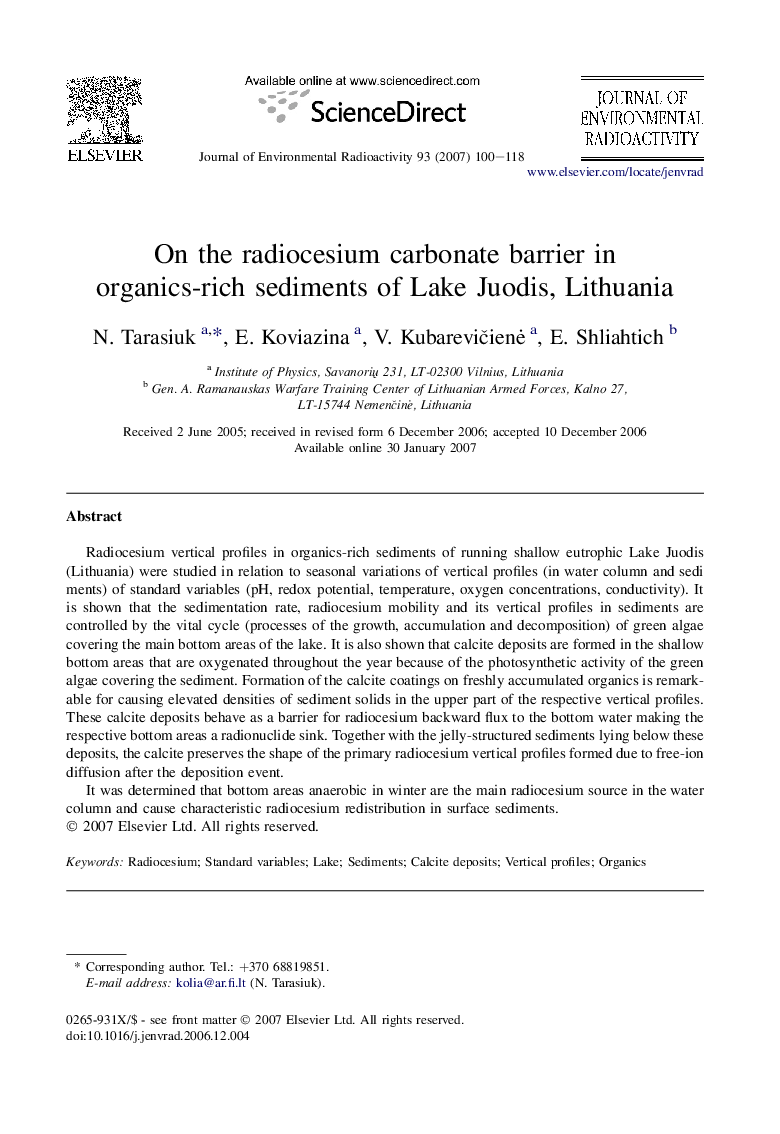| Article ID | Journal | Published Year | Pages | File Type |
|---|---|---|---|---|
| 1739485 | Journal of Environmental Radioactivity | 2007 | 19 Pages |
Radiocesium vertical profiles in organics-rich sediments of running shallow eutrophic Lake Juodis (Lithuania) were studied in relation to seasonal variations of vertical profiles (in water column and sediments) of standard variables (pH, redox potential, temperature, oxygen concentrations, conductivity). It is shown that the sedimentation rate, radiocesium mobility and its vertical profiles in sediments are controlled by the vital cycle (processes of the growth, accumulation and decomposition) of green algae covering the main bottom areas of the lake. It is also shown that calcite deposits are formed in the shallow bottom areas that are oxygenated throughout the year because of the photosynthetic activity of the green algae covering the sediment. Formation of the calcite coatings on freshly accumulated organics is remarkable for causing elevated densities of sediment solids in the upper part of the respective vertical profiles. These calcite deposits behave as a barrier for radiocesium backward flux to the bottom water making the respective bottom areas a radionuclide sink. Together with the jelly-structured sediments lying below these deposits, the calcite preserves the shape of the primary radiocesium vertical profiles formed due to free-ion diffusion after the deposition event.It was determined that bottom areas anaerobic in winter are the main radiocesium source in the water column and cause characteristic radiocesium redistribution in surface sediments.
